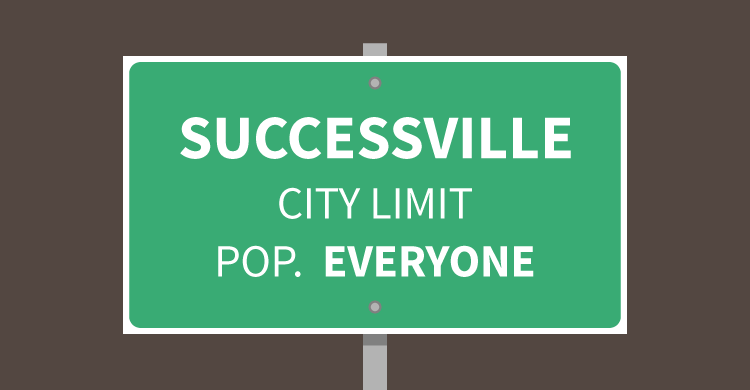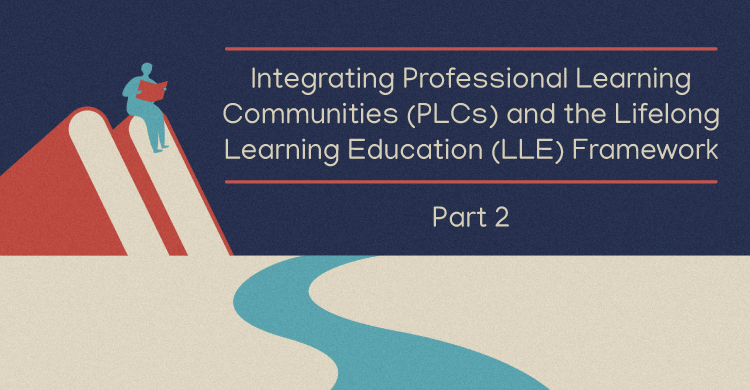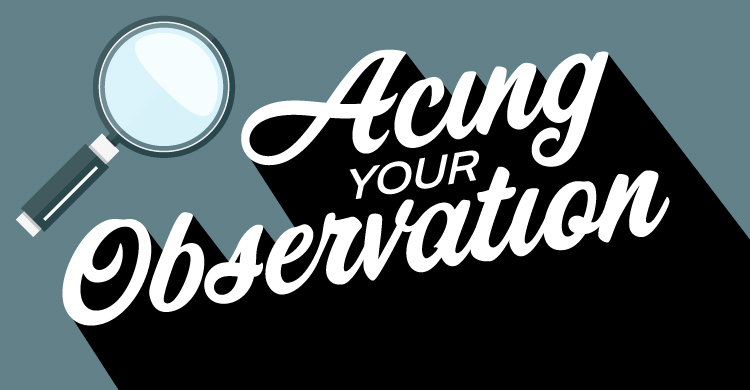“This is a social justice issue,” Superintendent Demond Means tells a room full of educators and community members. “All means all! We made a commitment as educators when we walked into our classrooms for the first time that we will reach every kid in our classroom. We didn’t make a commitment to reach 75% of the students.” (Promoting Excellence for All: A report from the State Superintendent’s Task Force on Wisconsin’s Achievement Gap, page 8)
You might not expect to hear these remarks from the superintendent of the district named the #1 K-12 district in the state of Wisconsin the past three years, whose high school achieved an ACT composite score of 26 and whose middle school, it was learned just the day before, is being recognized as a National Blue Ribbon School.
Dr. Means, now in his eighth year as superintendent of the Mequon-Thiensville School District, is passionate about closing the achievement gap. He is fearless in his pursuit of excellence, because of a deeply held sense of responsibility for each and every child in our state. As Chair of the State Superintendent’s Task Force on Wisconsin’s Achievement Gap, he led the state’s effort to identify proven-effective school and classroom practices that do just that – close the gap for children of color, English language learners, students with disabilities and students living in poverty.
The challenge facing high-performing organizations like Mequon-Thiensville is convincing people that improvement is needed. In this case, their greatest accomplishments will be their greatest challenges. In the words of our friend and professional colleague, Kathy Larson, “change is inevitable, improvement is optional, transformation is a courageous choice.” Transformation is what Dr. Means is all about. The courage comes from within and is fueled by his commitment to justice, not test scores. His responsibility is to frame the transformation as a journey toward a larger vision of a culture that “supports and challenges all students to achieve their full potential” (Mequon-Thiensville Strategic Plan). The job of educational leaders is to build capacity not just for great results, but for continuous improvement of the learning experiences that students and adults have within the organization and the community.
The educators and community members who Dr. Means was addressing were there to learn the SMART School Improvement Process, an approach that he and four of his central office administrators had been trained to lead as internal trainers and coaches. After a year of study, the team crafted a plan to engage all of the district’s school-based leadership teams, district departmental teams and a community partnership team in learning the process. Over the course of this year, the teams will learn and practice the process, ultimately returning to their respective schools and departments to lead the entire district in building a culture of continuous improvement.
As I think about the outstanding educational leaders I have met over the years, a distinct pattern of core values is clearly evident in their behaviors and their dispositions. They don’t view their jobs as a set of tasks to be done on the way to somewhere else. They view their jobs as their life’s purpose. They are driven by a passion for improvement, guided by the belief that we have what it takes to achieve a vision of excellence for all, for it truly is a matter of social justice.
[author_bio id=”30″]
[author_bio id=”383″]







great article.
Everyone student deserves to have an opportunity to be successful. I believe it is our mission as educators is to help students grow and learn no matter what their background.
Great article!
It is important to have the perspective of “there’s always room for improvement.” We should celebrate our successes, but then ask, “Ok, what do we need to do better?”
One line that spoke to me is that we need to be committed to justice or our students and not just a test score. Our students and teachers are so much more than that. We need to keep our eye on our scores, but they shouldn’t drive our school.
Setting high expectations and the belief that each individual can achieve the expectation is important. The key is to know each student to the point that as the educator you know what to say to motivate and push them. Being real to these kids, who are so desperate, is important. So often they want us to pay attention to them although they find the most unappealing ways to ask for our help.
I’ve only been teaching for 3 years but my biggest concern ( as a hispanic woman) is the way we as a school try to reach and “help” some of our students. As a kid who didn’t speak English till I was almost 10 ( and ended up earning a PhD in Chemistry) I can tell you that the way to reach “all” of them isn’t to pretend that the world is somehow other than what it is, to lower the bar, to give the kids fewer expectations, to make it “easier”. Being poor, or brown, doesn’t make them less intellectually capable. And it’s patronizing to them to treat them like it does. High school is their last chance to figure out how our society works and how to find their place in it before they’re adults and on their own. We owe it to them to truly prepare them, “ALL” of them.
I have had the privilege of observing many great teachers at Annandale. Yes, it helps to have great lesson plans that engage the students; group activities to give students the opportunity to work together and discovery new concepts; and passion from the teacher. But in order to reach all students, I have found that one key ingredient that an effective teacher has is he/she cares about the students. Sadly, some of our students may have low academic self-esteem, but we, the teachers, need to believe in them and encourage them to do their best. We can never give up on our students.
This is a social justice issue! I think we should take the quote “change is inevitable, improvement is optional, transformation is a courageous choice” to heart. There have been times I have struggled to make others see the potential of my students with disabilities (ability is part of disability). These students can shine – not despite their disability but because it has taught them to persevere and think outside the box.
With our current state of affairs we have seen that “change is inevitable”. We must grow and adapt as teachers and take into consideration that eveyone is dealing with this crisis in their own way. It will take more collaboration and patience to help each student be successful.
I think ‘meeting them where they are’ really resonated with me as a primary focus for us as a school and could serve as key theme for us moving forward.
Our students are our future. Like the song says “Teach them well and they will lead the way”, we must as educators value every student and set high expectations for each one. Before all that can happen though, it is vital we provide a safe and inviting environment that will allow the students to grow in and prosper. We must first know our students, build relationships with them, recognize their potential and then give them all possible opportunities to succeed.
“Change is inevitable, improvement is optional, transformation is a courageous choice’. With our dedication to additional training and collaboration through the summer and the 3 weeks of planning time before our students join us in our virtual classrooms, we are opting for improvement and choosing to transform.
As teachers one of the many hats we wear is cheerleader. We have to encourage each student by showing them that they can succeed. When they see that they are making progress, that gives them confidence to keep trying and move forward.
One change I that needs to happen, I think is happening with Mr. Derose’s leadership. We definitely need to be working more cohesively as a staff and more efficiently. If we are going to take this All means All seriously, we need to work together with effective collaboration both vertically, horizontally and across curriculums.
This reminds me of what my mother always told me: “Steven, all kids are special whether they are special ed or not, and we need to have the highest expectations for all of them.”
In my experience, the students at our school have always been mentally tough. When an assignment calls for extraordinary effort, my students have usually given it. If they choose not to give it, a simple “Is this your best effort?” gets them back on track. Offering opportunities for assistance is a great way to show that we are there for them. In addition, speaking to my students about what’s happening in their other classes has helped them understand I’m not just about my class. Showing an interest in my students’ “big picture” provides an avenue to get their best effort.
We need teachers to believe genuinely in students and their abilities to learn. This should be the core belief to all of us as educators.
Students need teachers who believe in them, even when they don’t believe in themselves. We cannot give up on those who struggle. All students are capable of learning and succeeding, and we must find a way to ensure that we keep that in mind in every interaction with students and with our colleagues.
The axiom “good enough” needs to cast out and high standards should be the ethos across the board. Low expectations from the start needs to be replaced with the belief that 100% of your kids can get this done..
Teachers need to set high standards and have the students strive to be their best. We need to give them the skills to be successful outside of school.
I believe if we all view our jobs as teachers, mentors and and continuing to learn we can pass that information to the students to let them know it doesn’t matter your economic background or race we all can be successful. We all need to be determined and believe this is possible.
This is where our future lies, young people of all walks of life being as successful as they can be. Given the right tools to accomplish their life goals is why we are here in the educational process.
I believe ones teachers make a commitment that I am going do my best to help all students to succeed there will be no need for them to ask only for a particular classes i.e. honors to teach. They will be prepared to teach team classes and come up with different strategies to help students succeed.
The article emphasizes educators role, determination, cares, plans, involvement etc. and inclusion of 100 % students to their success. I felt energized myself while reading the article ““All means all! We made a commitment as educators when we walked into our classrooms for the first time that we will reach every kid in our classroom. We didn’t make a commitment to reach 75% of the students.” Dr. Means noted it from the resource while describing ” This a social justice issue.”